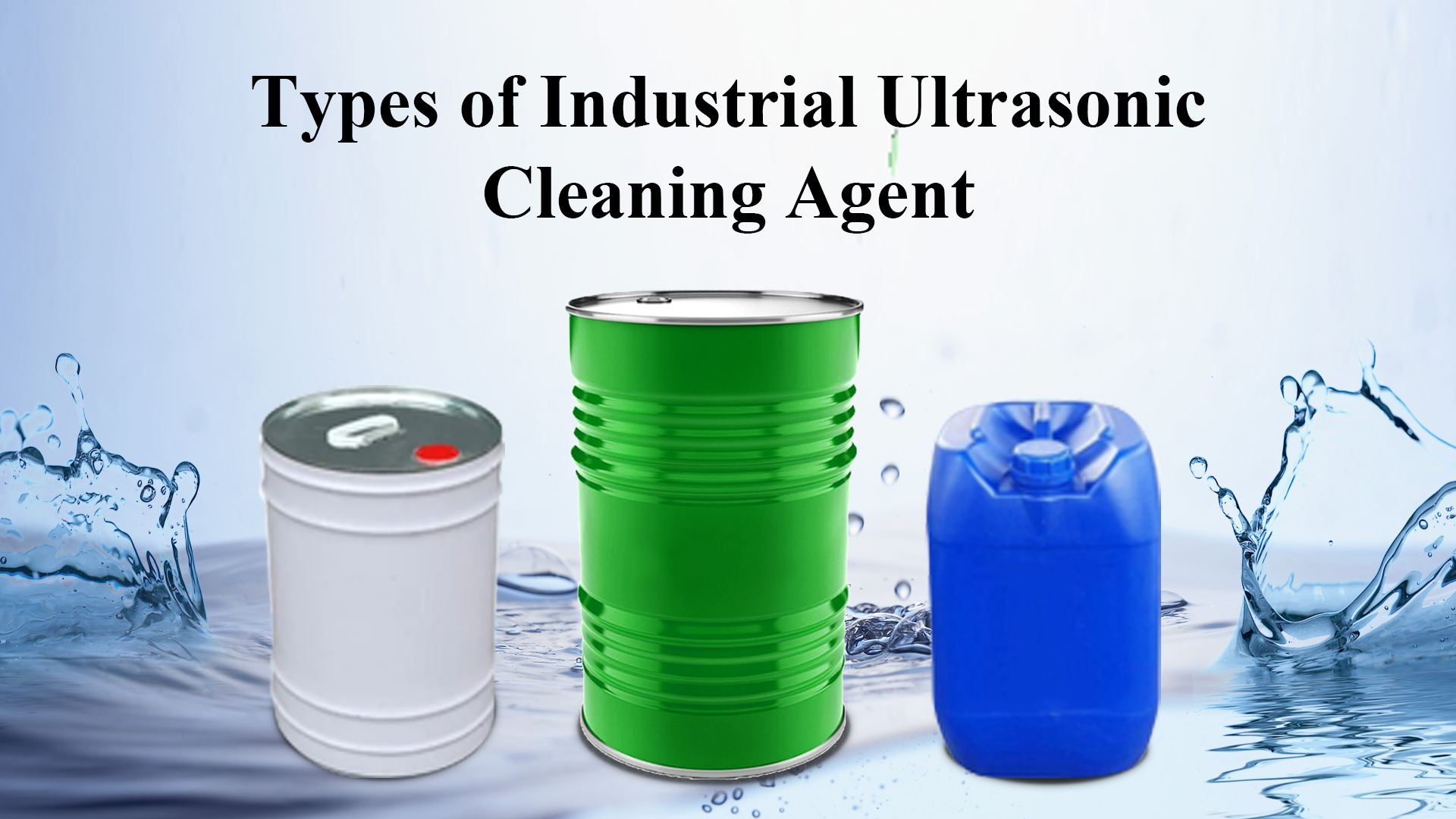As people's requirements for industrial cleaning efficiency are getting higher and higher, ultrasonic cleaning equipment is becoming more and more widely used, and many companies have purchased ultrasonic cleaning machines. In the process of ultrasonic cleaning, the choice of cleaning agent is also crucial. Because the use effects are different, the choice should be combined with your own products.
The cleaning agents used in industrial ultrasonic cleaning machines are divided into: water-based cleaning agents, semi-water-based cleaning agents, and solvent cleaning agents.

1. Water-based ultrasonic cleaning agent
Water-based cleaning agents are cleaning products based on water, and are divided into acidic, neutral (containing phosphorus, not containing phosphorus), and alkaline. The cleaning agents used during the use of ultrasonic cleaning machines are generally water-based cleaning agents. However, there is one thing that purchasers of water-based cleaning agents need to pay attention to: if they do not have anti-rust functions, they will speed up the production of metal components. The reason is that water-based cleaning agents remove the protective layer on the surface of the workpiece, which will accelerate rust. If you have high requirements for rust prevention, you should choose a water-based cleaning agent with anti-rust function. There are advantages and disadvantages to everything. If the water-based cleaning agent product adds some anti-rust ingredients, these ingredients may reduce the water-based cleaning effect. The cleaning power of the agent may be reduced.
The advantages of aqueous cleaning fluids: safe to use, safe to store and transport, not volatile, and relatively low cost compared to solvent-based cleaning fluids; disadvantages: needing drying treatment, rust-prone workpieces need anti-rust treatment after cleaning, and emission issues need to be considered
2. Semi-water-based ultrasonic cleaning agent
Semi-water-based cleaner: removes stubborn flux and solder paste residues, including lead-free solder, rosin solder, no-clean solder and tacky flux and other common electronic assembly residues. IONOX I3302 is particularly suitable for ultrasonic cleaning systems, centrifugal cleaning machines and semi-aqueous immersion cleaning systems.
≈ Flash point: 82℃
≈ Boiling point: 150℃
≈ Operating temperature: <70℃
≈Usage concentration: 100% (original solution)
3. Solvent ultrasonic cleaning agent
Solvent-based ultrasonic cleaning agents are generally solvents formed by the fusion of organic substances that can volatilize quickly. They are divided into halogen number (fluorine series, chlorine series, bromine series), hydrocarbon (non-functional: medium flash point, high flash point; function: Wax, glue, ink, flux, electrical machinery and equipment).
Hydrocarbon cleaning agent is a new type of environmentally friendly industrial solvent cleaning agent. It is composed of two elements: carbon and hydrogen. Its main component is hydrocarbons. It is obtained by deep processing of crude oil and is formulated with active solvents, solubilizers, stabilizers, etc., so it is called a hydrocarbon cleaning agent. Hydrocarbon cleaning agents are widely used industrial cleaning agents in Europe, the United States and Japan. They are used to replace trichlorethylene, methylene chloride, n-bromopropyl bromide, diesel, kerosene, gasoline, white electricity oil, Tianna water, and stain removal water on a large scale. Wait for non-environmentally friendly cleaning agents.
The vacuum hydrocarbon cleaning machine uses the mechanical impact force of extremely strong ultrasonic penetration to impact the workpiece surface, combined with the chemical decontamination effect of hydrocarbon cleaning agents, to clean the workpiece surface, blind holes and gaps in a vacuum state.
The advantage of solvent-based ultrasonic cleaning agents is that they have good decontamination and cleaning capabilities, do not require drying, and can be recycled through distillation and regeneration. In addition, they solve the problem of difficult waste liquid treatment of water-based cleaning agents and do not require additional investment in waste liquid treatment equipment. If the workpiece to be cleaned requires fast evaporation, high cleaning efficiency, and rust prevention requirements, you can consider using a solvent ultrasonic cleaning agent.
The disadvantages are high cost, low ignition point and easy fire, so try to use an ultrasonic cleaning machine with strong sealing when using it.
Tullker - Makes Cleaning Easier
Tullker Co., Ltd.—an environmentally friendly industrial cleaning solution provider that focuses on ultrasonic industrial cleaning and integrates R&D, production, marketing, and after-sales. In ultrasonic cleaning, vacuum hydrocarbon cleaning, two-fluid cleaning, spray cleaning, A large number of successful cases have been accumulated in the fields of DPF regeneration and cleaning, and are sold in 96 countries around the world.






